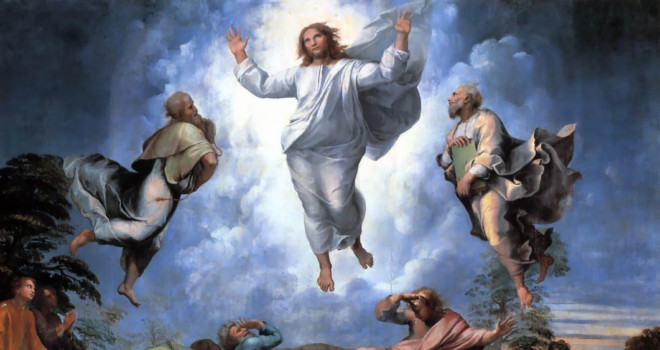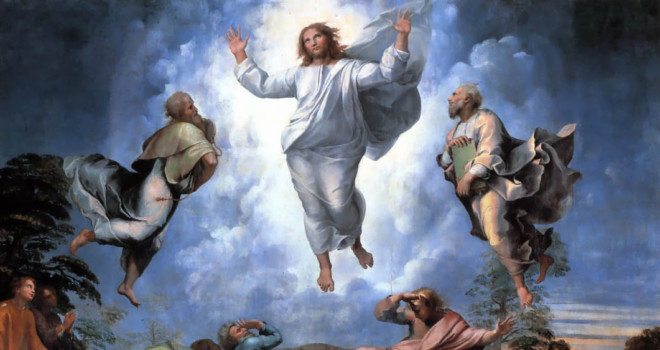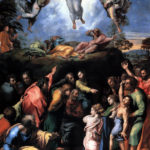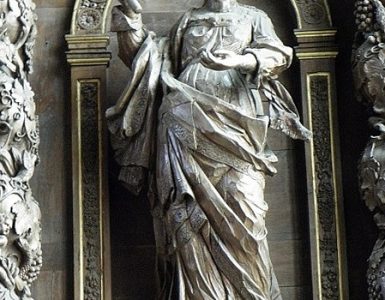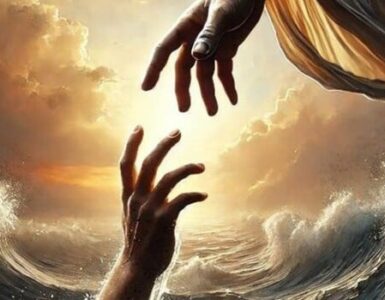Viewing and pondering sacred art offers the faithful a great way to meditate more deeply on the life and ministry of Jesus Christ. This series of articles will highlight several pieces of art related to the Luminous Mysteries of the Rosary, which highlight Our Lord’s public ministry. Each of these pieces of art allows us to reflect on Jesus’ teachings and miracles, connecting them more fully to our own lives.
The Fourth Luminous Mystery of the Rosary is the Transfiguration of Jesus on Mount Tabor. St. John Paul the Great, in his apostolic letter on the Rosary, calls this the “mystery of light par excellence.” The saintly pontiff reminds the faithful that the purpose of this important event at the end of Jesus’ public ministry was to prepare the apostles “to experience with him the agony of the Passion, so as to come with him to the joy of the Resurrection and a life transfigured by the Holy Spirit” (Rosarium Virginis Mariae, 21). This mystery draws a profound connection between the Sermon on the Mount, Jesus’ public ministry, and His sacrificial death on Mount Calvary.
Raffaelo Sanzio, better known to posterity as Raphael, was one of the artistic masters of the Italian Renaissance. In 1516, at the age of 33, he was commissioned to paint an altarpiece for the Narbonne Cathedral in France, and so he produced The Transfiguration. The painting was completed four years later, just before the young artist passed away at the age of 37. The altarpiece presents two halves of a story, both of which are recorded in the seventeenth chapter of Matthew’s Gospel. Raphael’s masterpiece is also ripe for personal reflection as it helps us to glean deeper understanding of this mystical event and its connection to the healing mercy of Jesus Christ. For all these reasons many historians and art commentators, and the artist himself, have thought his final painting to be his magnum opus.
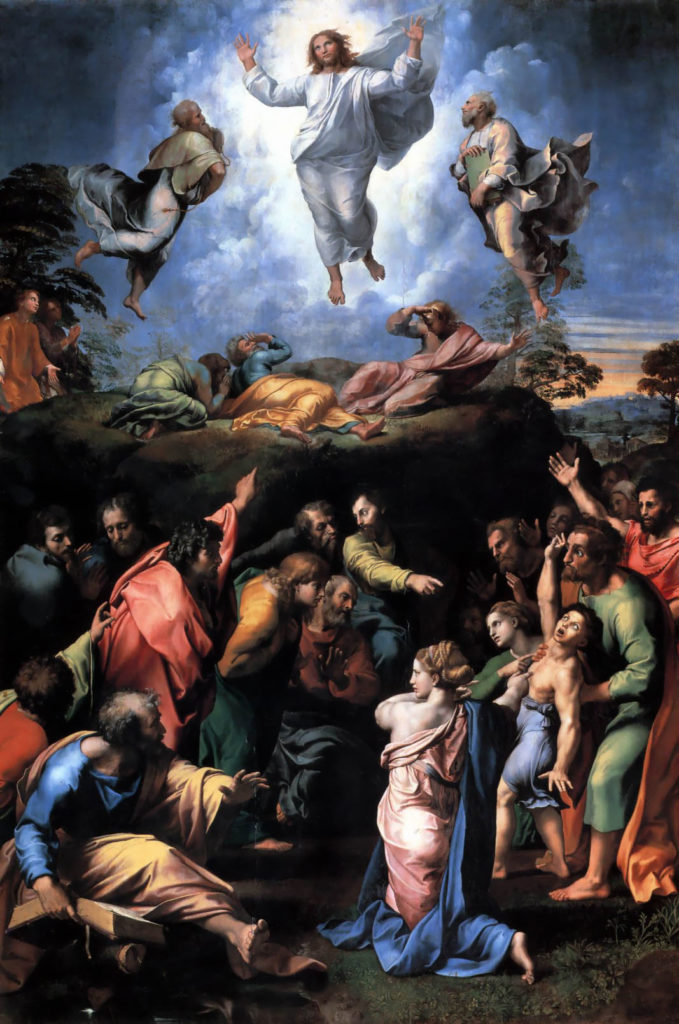
The top half of this altarpiece depicts the mystical event that took place atop Mount Tabor. At the top-center, the focal point of the whole image, is the transfigured Jesus. He is lifted up from terra firma and surrounded by a large cloud, which is brighter closer to its center. This indicates to the viewer that this historical Jesus is truly connected with the God who led Israel through the desert with a pillar of cloud (see Exodus 13:17-22). This causes us to ask: Do I allow Jesus Christ, his person and his ministry, to enlighten me and reveal the fullness of God’s love to me?
Another fascinating element of this top half of the altarpiece is the interconnected triangles that Raphael painted into the scene. Jesus is the apex of the first triangle in which Moses and Elijah form the sides. This provides a visual depiction of the revelation that Jesus Christ is the summation of the law and the prophets of the old covenants. The second triangle, pointing downward, is formed by Jesus’ two raised hands and right foot. This is a visual representation of the important theological point that Jesus was “born in the likeness of men” (Phil. 2:7), assuming a human nature to himself in the Incarnation. This is precisely why “a voice from the cloud” instructed Peter, James, and John to “listen to him” (Mt. 17:5). Every disciple has to ask: How am I called to empty myself in imitation of Jesus’ humility?
Below the Messiah and the prophets are the three apostolic figures who were led “up a high mountain apart” (Mt. 17:1). These figures lie prostrate, shielding their faces. Noting the apostles’ postures should cause the viewer to ask: Am I astonished by the powerful revelation of Jesus Christ? Do I have trouble assimilating that revelation into my body, mind, and spirit?
The most noticeable and interesting details about the apostles are the colors that they wear. The artist intended the colors to reveal the connection that each man has to one of the theological virtues. St. Peter wears blue for his incredible statements of faith, such as that recorded in Matthew 16:16. St. James, on the left, wears green because he wrote about the hope and joy that come from living one’s faith through daily effort. St. John, on the right, wears red for charity, which is the primary theme of his Gospel account and other New Testament letters. This event increased the theological virtues in these men, making them ready to share in Jesus’ passion by their own martyrdoms. How am I growing in faith, hope, and charity? How am I being prepared to walk my own via crucis?
The bottom half of the altarpiece presents the episode that followed immediately after Jesus’ Transfiguration. Upon descending Mount Tabor, the Messiah was approached by a father, asking for a miraculous healing of his demon-possessed son. This father, dressed in green, stands holding his son upright. While the four were atop the mountain, this man had brought his son to the other nine apostles, but “they could not heal him” (Mt. 17:16). This part of the scene causes a viewer to ask: Do I have a habit of bringing those in need into Jesus’ merciful, healing presence? If I am unable to do this physically, do I make it a reality through intercessory prayer?
On the left-hand side of the lower half are nine apostles. Here, Raphael gives expression to their confusion about their inability to heal. Most of these figures focus their attention on the demoniac boy, and several of them appear to be arguing amongst themselves. Only two of the apostles turn their attention and point toward Jesus. This portion of the scene allows each of us to ponder our own confusion, insecurity, and lack of efficacy in our works. Have I taken time to meditate on Jesus’ answer to the apostles that they could not heal him because of their lack of faith (cf. Mt. 17:20). Have I connected this with what Jesus spoke in another Gospel passage: “Whoever abides in me and I in him, he it is that bears much fruit, for apart from me you can do nothing” (Jn. 15:5)?
The figure in the bottom-left of the painting draws the viewer more deeply into the anticipation of Jesus’ mighty works. This is St. Matthew, identified by the book that represents the Gospel account he writes. St. Matthew gestures to the viewer as if to say, “Wait! Watch! Something amazing is happening here.” This allows the viewer the opportunity to examine his own life: Do I eagerly anticipate Jesus’ miracles in my life? Do I trust that He can and will perform those miracles so that I can be transformed like Peter, James, John, the other apostles, and healed like the demoniac boy?
In his final masterpiece, Raphael makes an important point about Christian discipleship. This image reminds viewers that mystical experiences and ongoing works of faith and mercy were separated in Jesus’ ministry, and they cannot be separated in our lives. While things might seem hopeless and ineffective, all things can be transfigured and transformed if we focus first on Jesus and then on the works that He has given each of us to do. Only that will allow any and all of us to reflect His light and continue to do His work in the world.
✠
The Transfiguration resides at the Vatican Museums.


